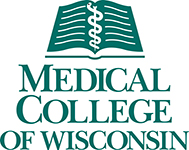Dual-axis rotational coronary angiography: a new technique for detecting graft coronary vasculopathy in pediatric heart transplant recipients. Pediatr Cardiol 2013 Mar;34(3):560-5
Date
09/08/2012Pubmed ID
22956061Pubmed Central ID
PMC5060090DOI
10.1007/s00246-012-0494-2Scopus ID
2-s2.0-84879507506 (requires institutional sign-in at Scopus site) 4 CitationsAbstract
Annual surveillance coronary angiograpyhy to screen for graft coronary vasculopathy is routine practice after orthotopic heart transplantation. Traditionally, this is performed with direct coronary angiography using static single-plane or biplane angiography. Recently, technological advances have made it possible to perform dual-axis rotational coronary angiography (RA). This technique differs from standard static single-plane or biplane angiography in that a single detector is preprogrammed to swing through a complex 80° arc during a single injection. It has the advantage of providing a perspective of the vessels from a full arc of images rather than from one or two static images per contrast injection. The current study evaluated two coronary angiography techniques used consecutively at a single center to evaluate pediatric heart transplant recipients for graft coronary vasculopathy. A total of 23 patients underwent routine coronary angiography using both biplane static coronary angiography (BiP) and RA techniques at the Children's Hospital of Wisconsin from February 2009 to September 2010. Demographic and procedure data were collected from each procedure and analyzed for significance utilizing a Wilcoxon rank sum test. No significant demographic or procedural differences between the BiP and the RA procedures were noted. Specific measures of radiation dose including fluoroscopy time and dose area product were similar among the imaging techniques. The findings show that RA can be performed safely and reproducibly in pediatric heart transplant recipients. Compared with standard BiP, RA does not increase radiation exposure or contrast use and in our experience has provided superior angiographic imaging for the evaluation of graft coronary vasculopathy.
Author List
Gudausky TM, Pelech AN, Stendahl G, Tillman K, Mattice J, Berger S, Zangwill SAuthor
Todd M. Gudausky MD Associate Professor in the Pediatrics department at Medical College of WisconsinMESH terms used to index this publication - Major topics in bold
AdolescentChild
Child, Preschool
Cohort Studies
Contrast Media
Coronary Angiography
Coronary Artery Disease
Female
Graft Rejection
Heart Transplantation
Hospitals, Pediatric
Humans
Male
Monitoring, Physiologic
Patient Safety
Radiation Dosage
Radiographic Image Enhancement
Reproducibility of Results
Risk Assessment
Statistics, Nonparametric









